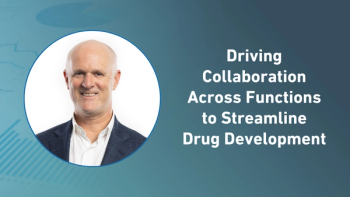
- Applied Clinical Trials-10-01-2023
- Volume 32
- Issue 10
Reaching for the ‘White Spots’ in Rare Disease
EU proposal focuses on a subset of underserved rare diseases—exploring the gaps in those conditions for which there is no approved treatment option.
The latest promise held out by the European Union to rare disease patients comprises not only “new capacities and capabilities to execute innovative trial designs,” but also “solutions to address scientific gaps and technical and operational challenges.” The outcome, according to the proposal’s assurances, should be “dedicated, rare-disease specific and sustainable infrastructure” for rare diseases with high unmet medical needs. But the promise is conditional. It comes in the shape of a new research program—and the condition is that the EU will provide the money while a chosen team will do the work.
The proposal, released in July,1 aims to optimize drug development through clinical trials conducted for small populations and clusters of diseases with commonalities. It will focus on a subset of the 95% of underserved rare diseases—the “white spots” constituted by those conditions for which there is no approved treatment option and where development is not currently commercially viable.
Among the novelties it brandishes, the program will engage regulators and health technology assessment (HTA) bodies in validating recommendations for the use of registries driven by electronic health record (EHRs) and longitudinal natural history studies, and seek closer alignment on the uses of real-world evidence (RWE)—issues currently so lacking in European consensus as to trip up many innovative studies. It is also targeting the particular problems in accessing trial sites that are scientifically and operationally qualified and with readily available pools of patients, especially in the area of advanced therapies. And it is aiming to ensure closer compatibility and alignment on some of the classic pinch points between regulators and industry.
It is a serious attempt to tackle the limited understanding of disease etiology, biology and natural history handicapping progress, and the lack of established endpoints for use in clinical trials. It links to the EU “moonshot” program on rare diseases, the European Reference Networks, and the registries they are each developing in their own specific disease areas, the European Joint Program on Rare Diseases, and to the European Platform on Rare Disease Registration Platform for clinical data management, as well as the the Accelerating Clinical Trials in EU initiative. It will also tie into a new cluster of Horizon Europe projects on developing therapies for rare diseases with no approved options expected to start in the fall, and the EU Partnership on Rare Diseases that is expected to start in mid-2024.
The plethora of EU initiatives in this field (the team that wins this latest contract is also expected to “partner with existing projects/initiatives, including the Innovative Medicines Initiative, Screen4Care, conect4children…” and half-a-dozen other EU programs on rare diseases) might be seen as a strength. But it also holds the risk of being a weakness—as this proposal acknowledges (without any apparent irony) with its additional aim “to help overcome the fragmentation of the clinical trial environment across Europe.”
The proposal also has an explicit link to boosting the innovation culture in the EU, and in a remarkable display of optimism states: “Europe is becoming more attractive for the clinical development of medicines for rare/ultra-rare diseases thanks to the uptake of innovative methodological approaches for conducting successful clinical trials for rare/ultra-rare diseases.” That is a point of view not universally shared: CEOs of international Big Pharma firms have spent much of 2023 denouncing the barriers to research investment posed by EU regulation, backing their criticisms with threats of relocating their drug development programmes away from Europe. And even the EU itself admits that more must be done to attract and retain innovation in Europe.2
This is perhaps the core of EU challenges in driving innovation—reconciling the many distinct but inter-related bodies, agencies, authorities, interest groups, and stakeholders in Europe. It is not just the 26 member states with their own competing views and priorities, but the jockeying for power and position among the EU institutions themselves—the European Commission that proposes laws, the European Parliament (with its multiple political groupings among its 700+ members) and the Council (where national ministers and their diplomats deliberate) that jointly decide on legislation, the European Medicines Agency (EMA), and the parallel Heads of Medicines Agencies. Behind each of these formal actors there lies a complex web of indirect influences—often pitting industry against payers or regulators, or consumer and patient groups, or scientific or medical societies, or health professional organizations.
The ultimate example of this “fragmented” landscape alluded to in this latest proposal is the current plan to reform the EU’s rules on pharmaceuticals, of which this column has already offered some thoughts.3 It, too, amounts to a promise—a promise that is in many respects self-contradictory in its desperation to emulsify the conflicting views underlying almost every issue it touches upon. Unfortunately, the EU’s record in fulfilling its promises in the pharmaceutical and clinical trial sphere is not without blemish. This column will be delighted if it can report on some whiter rather than darker spots in upcoming columns.
Peter O'Donnell is a freelance journalist who specializes in European health affairs and is based in Brussels, Belgium
References
Articles in this issue
about 2 years ago
Bringing Solutions Togetherabout 2 years ago
Budgets and Billing in Clinical Trials: DCT Considerationsabout 2 years ago
Training the Raters: An Important Factor in Clinical Trial Successabout 2 years ago
FDA Inspections Face Continued Overhaul and Changesabout 2 years ago
Getting IRT Right – Part 1: RandomizationNewsletter
Stay current in clinical research with Applied Clinical Trials, providing expert insights, regulatory updates, and practical strategies for successful clinical trial design and execution.






.png)



.png)



.png)
.png)
